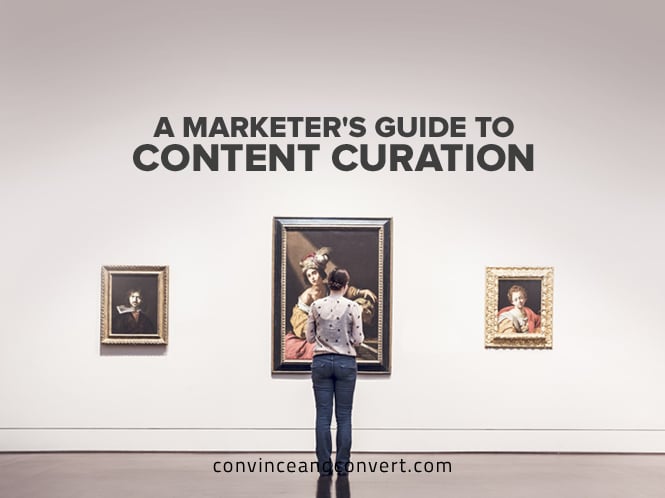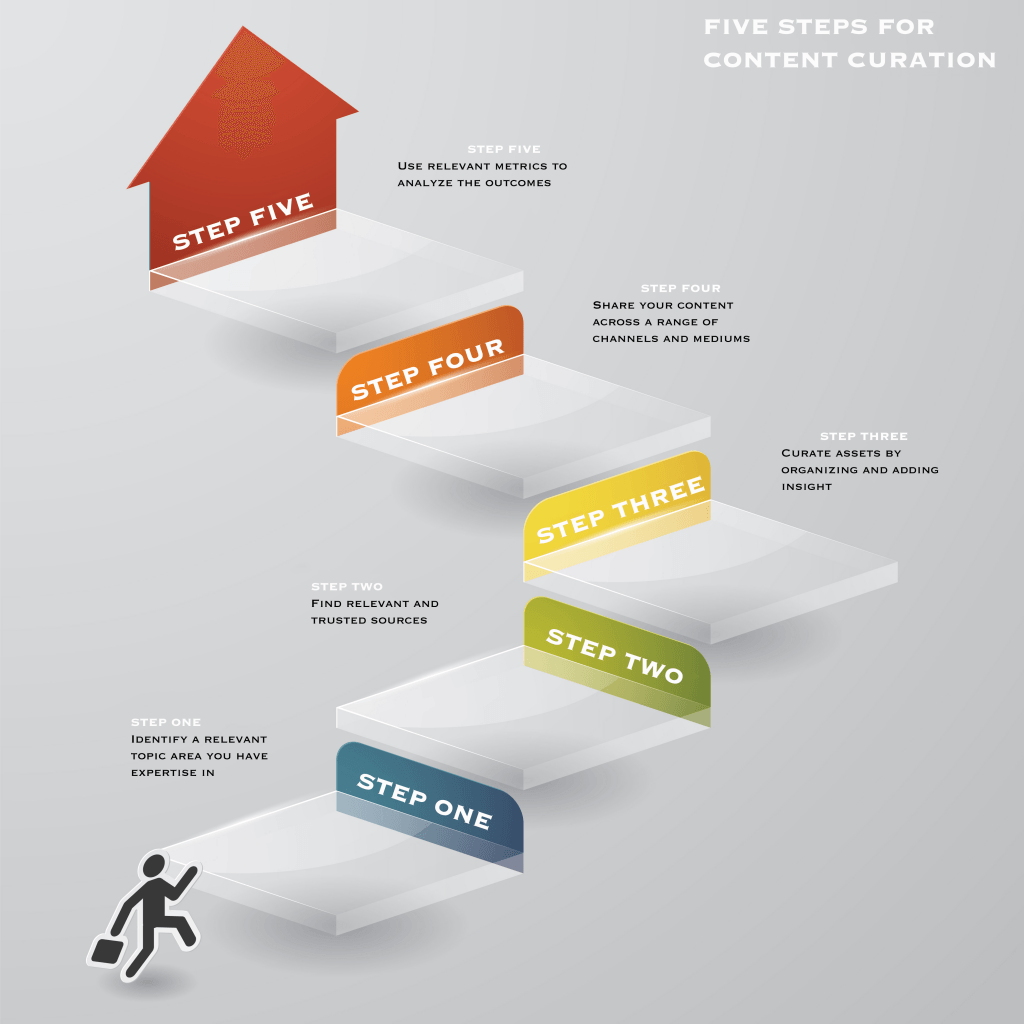A Marketer’s Guide to Content Curation. There are five key steps for successful content curation: Identify the topic area Find relevant sources Curate assets Share results Analyze outcomes Let’s highlight what each step entails. Content: Consider the overall landscape, and make sure there is sufficient third-party content in a topic area to be worth the effort to organize it. You want to ensure assets are curated in a relevant area that your audience finds valuable and that competitors have not (yet, or adequately) addressed. Find Relevant Sources Once the topic is selected, identify relevant and trusted sources as candidates for content curation. Provide a balanced mix of experts, dissenters, and up-and-comers (different views and perspectives) in order to optimize value for your audience. Curate Assets Curating entails organizing content assets and adding value to them. Web sites and microsites that focus on a particular topic are also relevant. Analyze Outcomes As a content marketing strategy, content curation is unique because it relies on third-party content developed by external parties. Similarly, subscriber growth rates and click-through rates are important metrics for email newsletters.

Listen to this blog post as a podcast:
Have you been sold on the benefits of content curation and decided to make it an integral part of your content marketing strategy? Welcome to the club. After all, curation is an excellent way to augment content marketing investments and supplement original content assets. Content curation accelerates marketing initiatives, increases trust, and improves lead generation, while also reducing content development costs.
When making the transition from theory to action, what is required to curate content? There are five key steps for successful content curation:
- Identify the topic area
- Find relevant sources
- Curate assets
- Share results
- Analyze outcomes
Let’s highlight what each step entails.

1. Identify the Topic Area
First, it is essential to identify a relevant topic area. It should be related to your area of expertise, as well as your target market and value proposition. When identifying the types of content to curate, focus on three perspectives.
- Audience interest: The best place to start is to consider your audience, and what you consider relevant to meet your customers’ and prospects’ needs.
- Content: Consider the overall landscape, and make sure there is sufficient third-party content in a topic area to be worth the effort to organize it.
- Competitor landscape: Consider what your competitors are doing. You want to ensure assets are curated in a relevant area that your audience finds valuable and that competitors have not (yet, or adequately) addressed.
Curation allows anyone to bring in the best content industry experts have to offer. The topic area should be broad enough to encompass a range of perspectives, while also sufficiently focused to address key concerns.
2. Find Relevant Sources
Once the topic is selected, identify relevant and trusted sources as candidates for content curation. Sources can include:
- Trade publications
- News sites
- RSS feeds
- Industry blogs
- Electronic journals, and more.
With a well-chosen topic, it should be easy to identify at least a dozen sources by reviewing content you already consume. Be prepared to add new sources, particularly if you are part of a fast-changing marketplace.
Curation exploits the link power of the web, so link to related articles on an ongoing basis. Provide a balanced mix of experts, dissenters, and up-and-comers (different…
COMMENTS